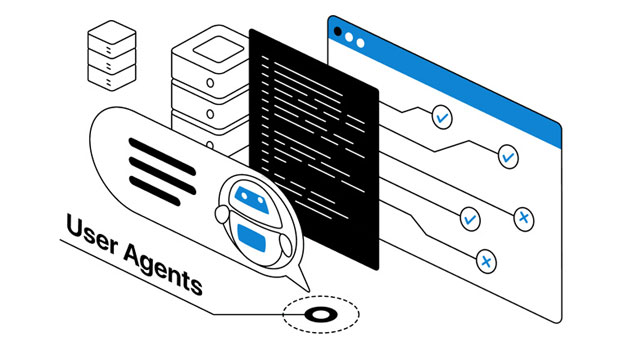In today’s digital world, online privacy and security are becoming more important, especially when browsing the internet. One of the ways people achieve greater security and anonymity online is by using web proxies. But the question arises: when using web proxy services, do you need to install any plugins or software? This article will provide an in-depth exploration of this topic, offering clear insights into how web proxy services work, whether installation is necessary, and what alternatives exist. Understanding Web Proxies: What They Are and How They WorkA web proxy acts as an intermediary between your device and the internet. It routes your web traffic through its servers, masking your original IP address and providing you with a new one. This can help you maintain privacy, bypass geo-restrictions, and access content that might otherwise be blocked in your location.When using a web proxy, your device sends a request to the proxy server, which then forwards the request to the target website. The website responds to the proxy server, and the proxy then forwards the response back to your device. This process helps hide your identity and protect your personal data.Types of Web Proxy ServicesThere are several different types of web proxy services, each with its unique features and functionalities. These include:1. HTTP Proxies: These are the simplest form of web proxies, typically used for basic web browsing. They only route HTTP traffic and are easy to set up. HTTP proxies can be used through a browser without requiring additional software or plugins.2. HTTPS Proxies: These proxies provide a higher level of security by encrypting the data between your device and the proxy server. They are more suitable for activities like online banking and shopping, where security is a priority.3. SOCKS Proxies: SOCKS proxies support a broader range of internet traffic compared to HTTP and HTTPS proxies. They are commonly used for torrenting or other data-heavy activities but often require additional setup and, in some cases, software installation.4. Residential and Data Center Proxies: These proxies provide different IP addresses, with residential proxies using IPs from actual households and data center proxies using IPs from server farms. Both types serve different needs in terms of anonymity and speed.Do You Need Plugins or Software to Use Web Proxies?The necessity of installing plugins or software depends on the type of web proxy service you are using and how you intend to use it. Here are some key points to consider:1. Browser-based Web Proxies (No Installation Required): Many free and paid web proxies allow you to access them directly through your browser. You simply need to visit the proxy’s website, input the URL you want to access, and the proxy service will handle the rest. These services generally don’t require any plugin installation or additional software. All the functionality is built into the web interface.2. Browser Extensions (Plugins): Some web proxies are available as browser extensions or plugins for popular browsers like Chrome, Firefox, and Safari. These extensions add a layer of convenience by allowing you to access proxy features directly from the browser toolbar. They typically require installation but do not require additional software beyond the browser.3. Software-based Proxies (Installation Required): More advanced proxy services, particularly those involving SOCKS proxies or those that offer high levels of encryption, often require the installation of specific software. This software manages the proxy connections and may offer additional features like automatic switching of IP addresses, secure tunneling, and higher data protection. In these cases, you must install the software on your device to benefit from the full range of services.4. VPN vs. Proxy (What’s the Difference?): While both VPNs and web proxies can offer anonymity and privacy, VPNs generally require the installation of software. A VPN routes all internet traffic through an encrypted tunnel, whereas web proxies typically only route specific types of traffic (such as web browsing). If you want to ensure all your internet traffic is protected and you don’t want to install multiple plugins or software, a VPN might be a better solution, even though it also requires software installation.Advantages of Using Web Proxy ServicesWeb proxies offer several benefits that make them an attractive choice for users seeking online privacy, anonymity, and security. Some of the key advantages include:1. Anonymity: A web proxy hides your real IP address, making it difficult for websites and online trackers to identify you. This can help you maintain privacy and protect your personal information.2. Bypass Geo-restrictions: Some websites or services may be blocked in certain regions. Using a web proxy allows you to bypass these restrictions by masking your IP address and appearing to access the internet from a different location.3. Increased Security: While web proxies are not as secure as VPNs, they can still offer a degree of protection, particularly when using HTTPS proxies, which encrypt the data between you and the proxy server.4. Accessing Blocked Content: If certain content is restricted in your area, a proxy can help you access it by routing your traffic through a server in a region where the content is available.Potential Drawbacks of Web Proxy ServicesDespite their many advantages, web proxies have some limitations that users should be aware of:1. Limited Encryption: While HTTPS proxies provide some level of encryption, they are still not as secure as a VPN, which encrypts all internet traffic. This can be a concern for users who require high-level data protection, such as when making financial transactions.2. Slower Speeds: Using a web proxy can sometimes result in slower internet speeds, especially when using free proxy services. This is because your traffic is being rerouted through an additional server, which can introduce latency.3. Limited Coverage: Unlike VPNs, which secure all types of internet traffic, web proxies usually only route specific traffic, such as HTTP or HTTPS requests. This means they may not provide full protection for all your online activities.How to Choose the Right Web Proxy ServiceChoosing the right web proxy depends on your specific needs. Here are some factors to consider when selecting a web proxy:1. Purpose: Are you looking for privacy, unblocking content, or improving security? Understanding your primary objective will help you choose the best proxy for your needs.2. Ease of Use: If you want something quick and simple, a browser-based proxy or an extension may be ideal. However, if you require more advanced features, such as SOCKS support or encryption, you may need to consider software-based proxies.3. Reliability and Speed: Some proxies can slow down your connection due to traffic rerouting. Research user reviews to ensure the proxy you select offers a balance of speed and reliability.4. Cost: While there are free web proxies available, they often come with limitations like slower speeds or fewer features. Paid proxies, on the other hand, typically offer better performance and additional features like encryption.ConclusionIn conclusion, whether or not you need to install plugins or software when using a web proxy depends on the type of proxy you choose. For basic browsing, a browser-based web proxy does not require installation. However, for more advanced features and enhanced security, software or plugins may be necessary. Understanding the specific benefits, limitations, and requirements of each type of proxy will help you choose the most suitable option for your online privacy and security needs.
Jul 11, 2025
![arrow]()

















































